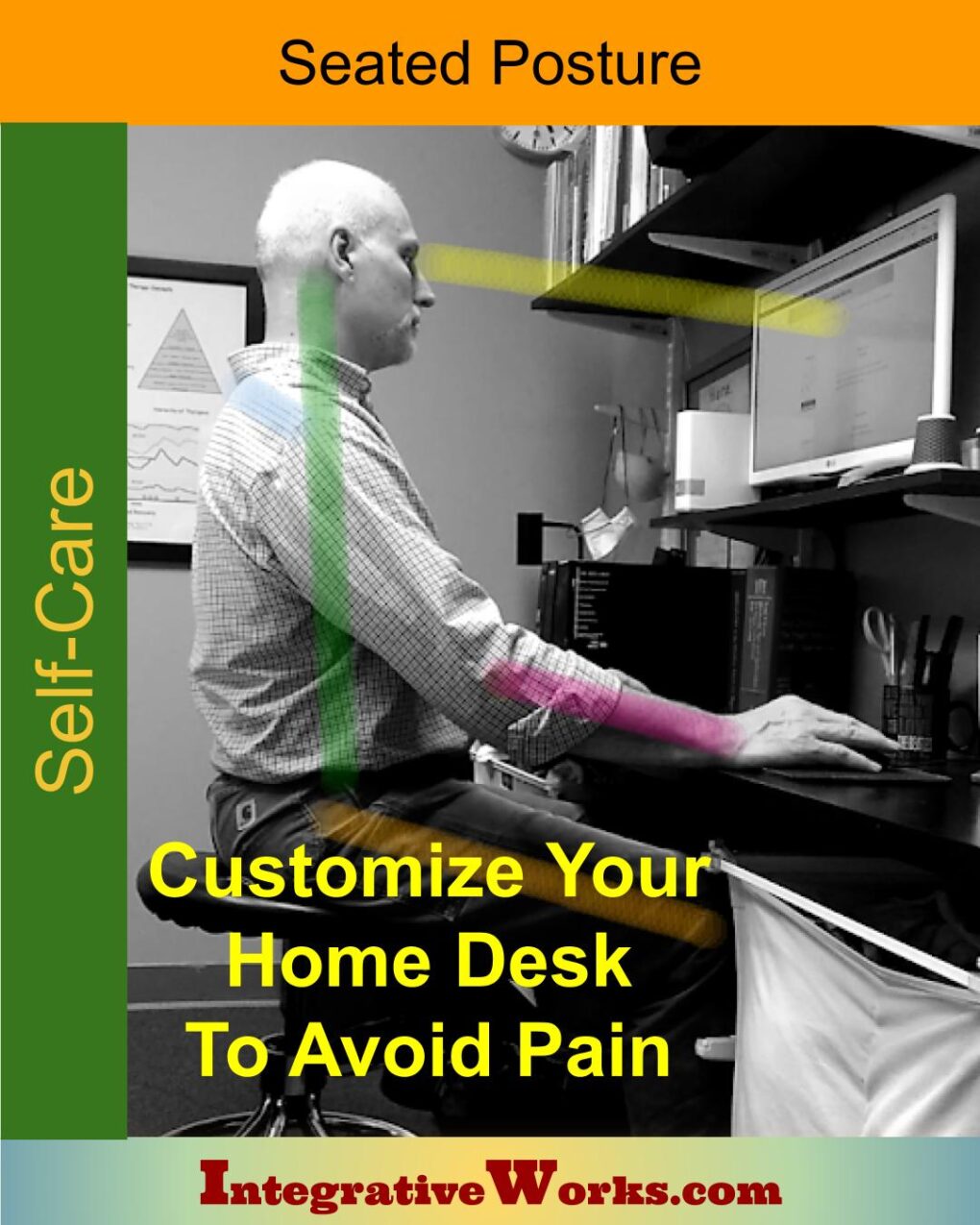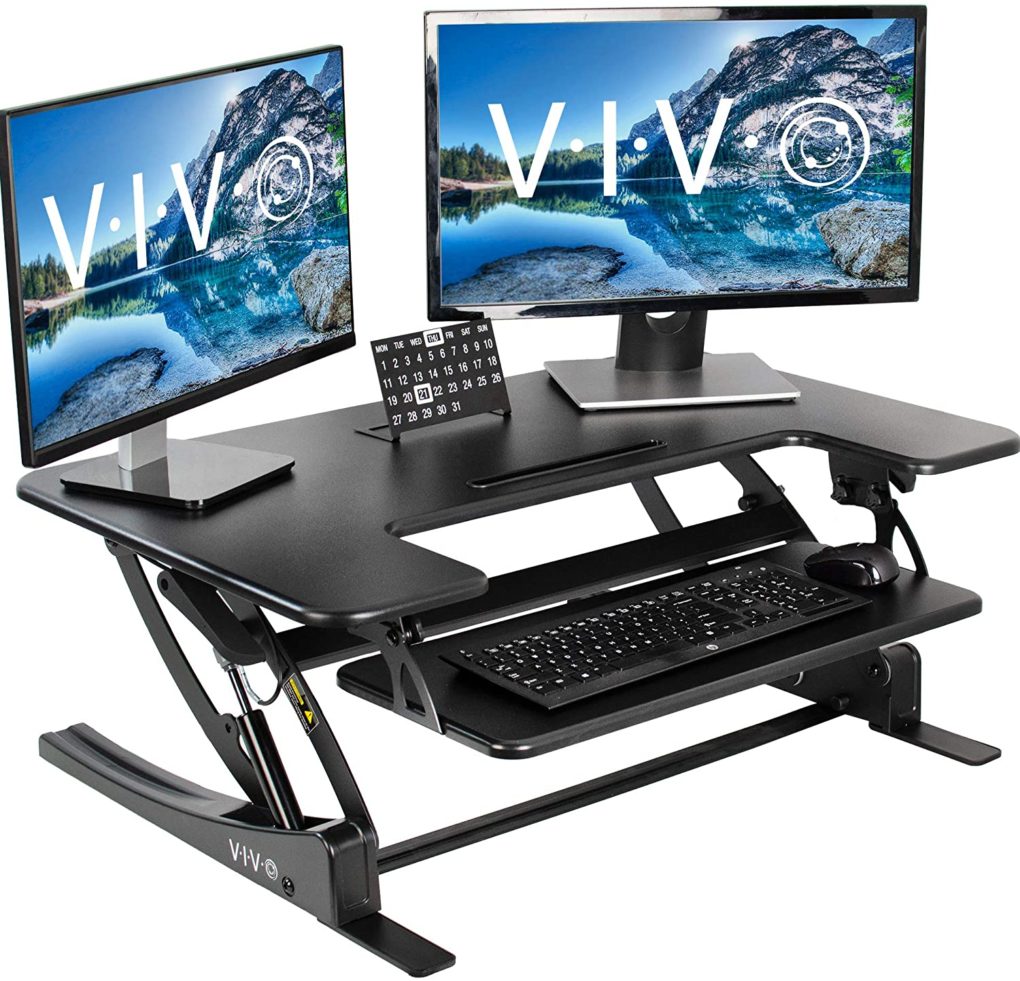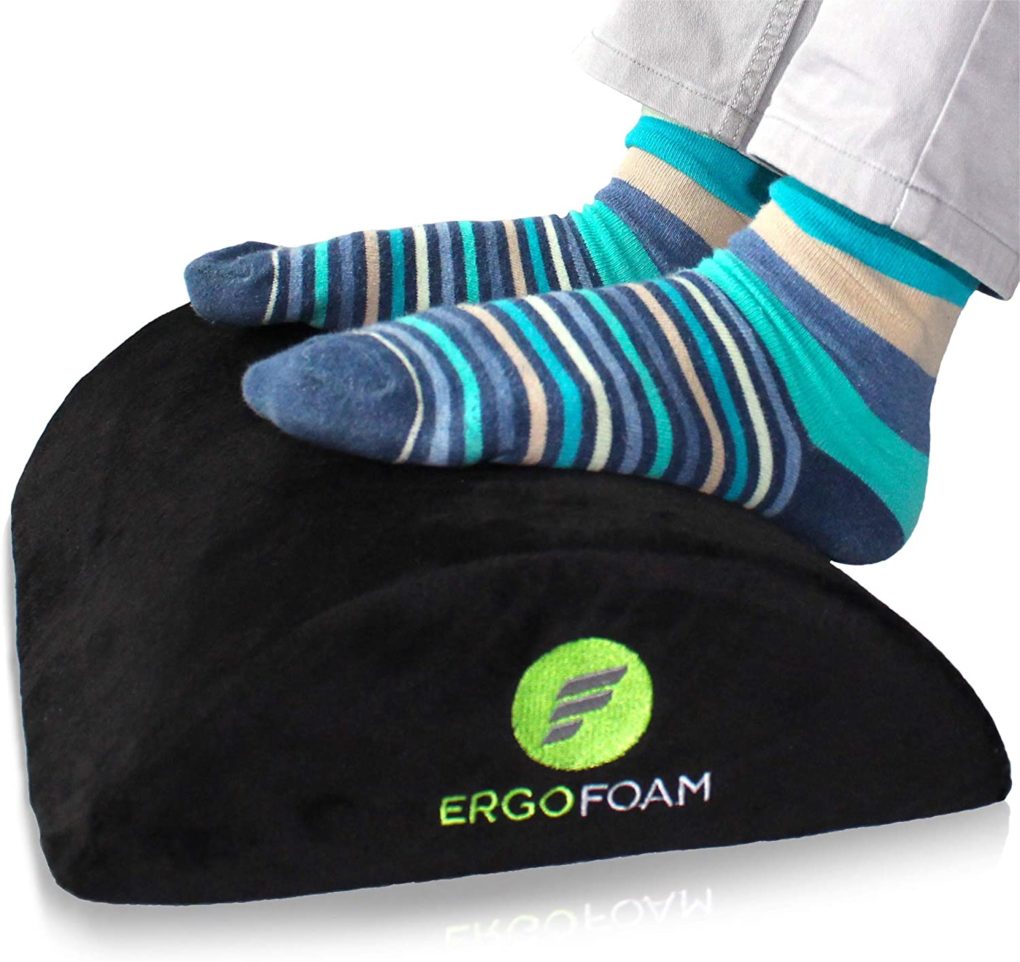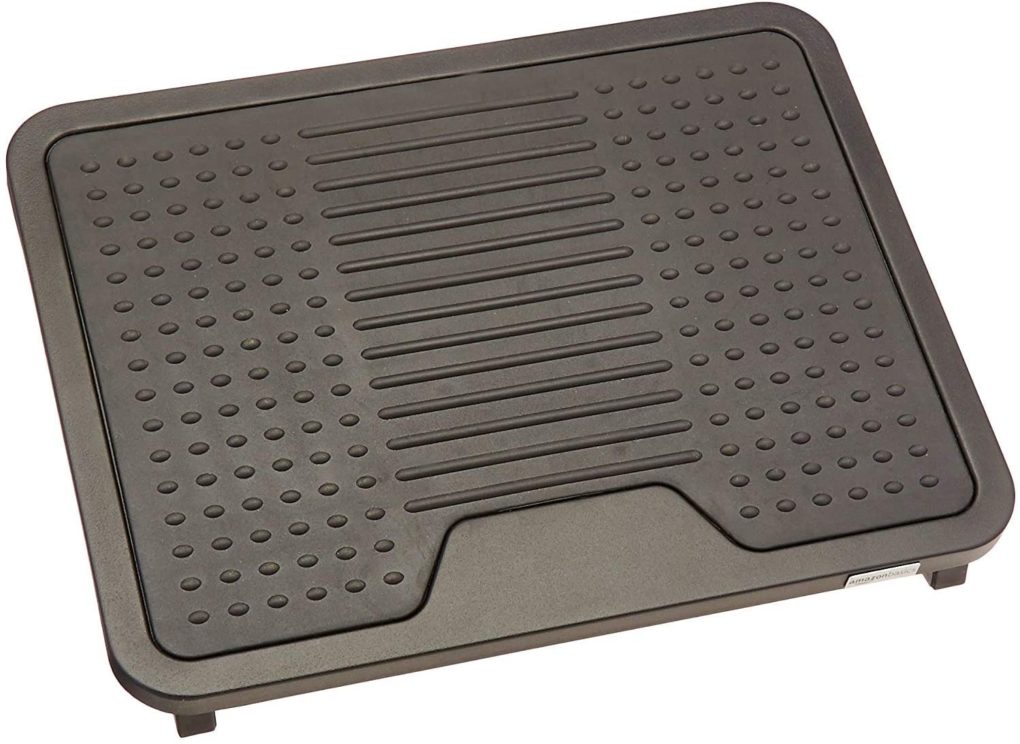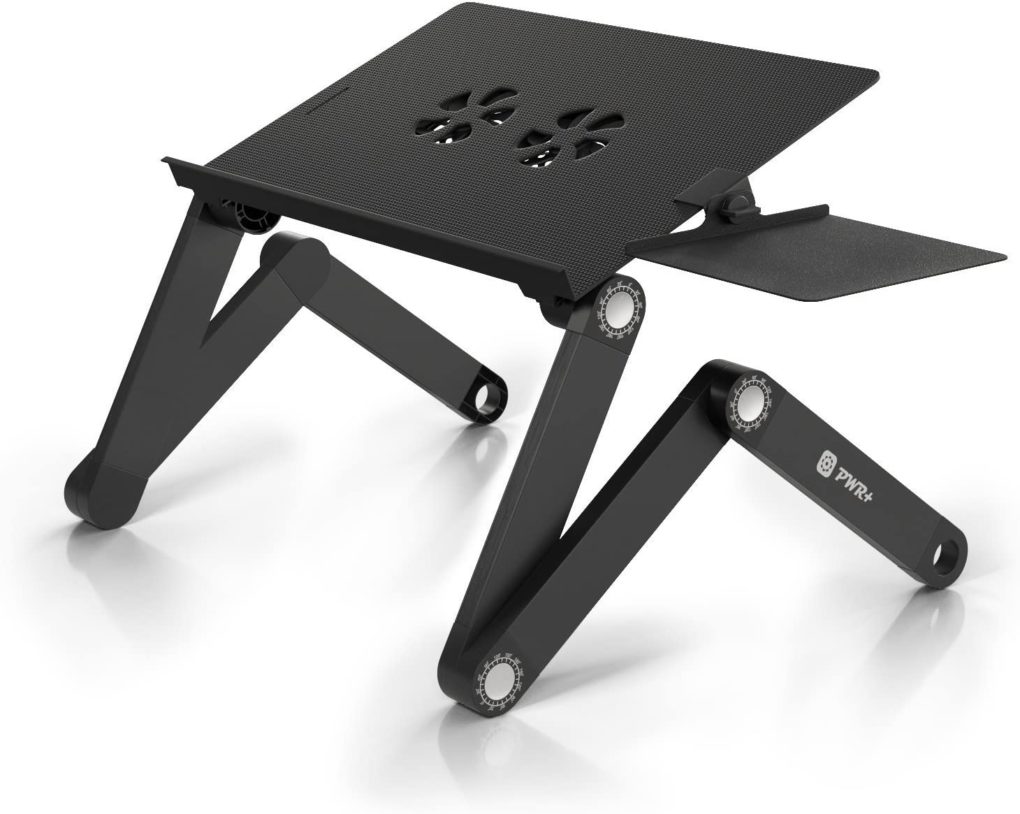There are many posts where I discuss problems created by poor seated posture, so here’s a post about how to sit to avoid creating problems.
This post explores two different approaches to minimizing the pain and discomfort of sitting at a desk. First, actively sitting in a balanced posture, and secondly, passively supporting postural imbalances. I like exercising and getting bodywork so that active sitting is comfortable for hours. Many people need ergonomic support because sitting without them distracts from their work or leaves them in pain. I also discuss a few accessories that help people reduce discomfort while working at a desk.
Actively Sitting in a Balanced Posture:
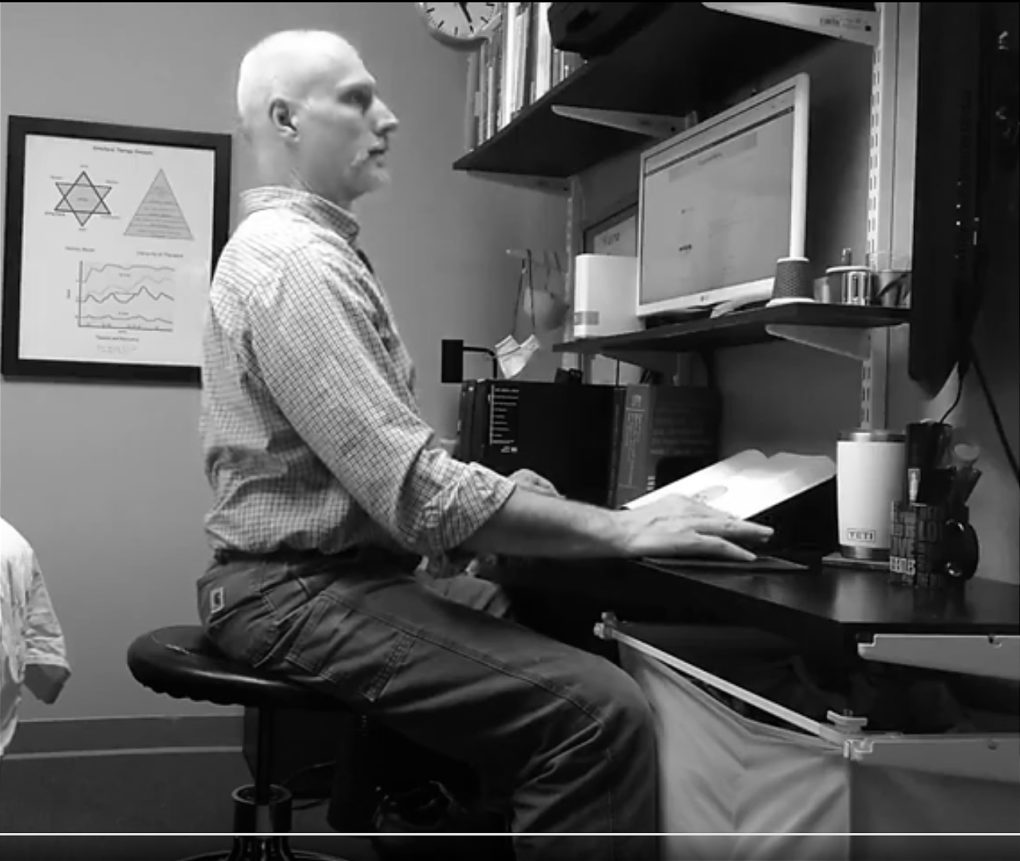
This is my setup in my office. I have modular shelving, which is easy to adjust for my specific dimensions. I planned it that way because I knew I would spend a lot of time here. The desktop and shelving are adjustable in height and can comes in different styles. The stool’s size and position, shelves, keyboard, and such are set up for many tasks; writing posts, watching educational videos, organizing therapy tools, storing laundry, shelving books, etc.
The monitors, keyboard, work area, etc., are set up to be comfortable for long work periods. It is, however, important to move. Several sources suggest that you put a timer across the room to remind you to get up and, at the least, reset it once in a while.
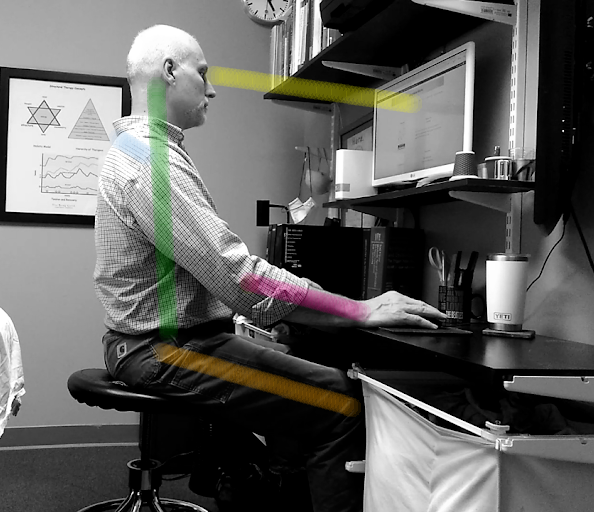
Stacked Posture
When I’m spending a lot of time writing a single post, I’m sitting with my legs tucked under the keyboard like this one. I can sit and write comfortably for quite a while. My Fitbit unexpectedly reminds me to move, not realizing that almost an hour has passed.
I’ve noted a few things here with colored lines.
My head is over my hips.
My shoulders are dropped down and back.
My knees are lower than my hips.
The screen is at eye level and about arm’s length away.
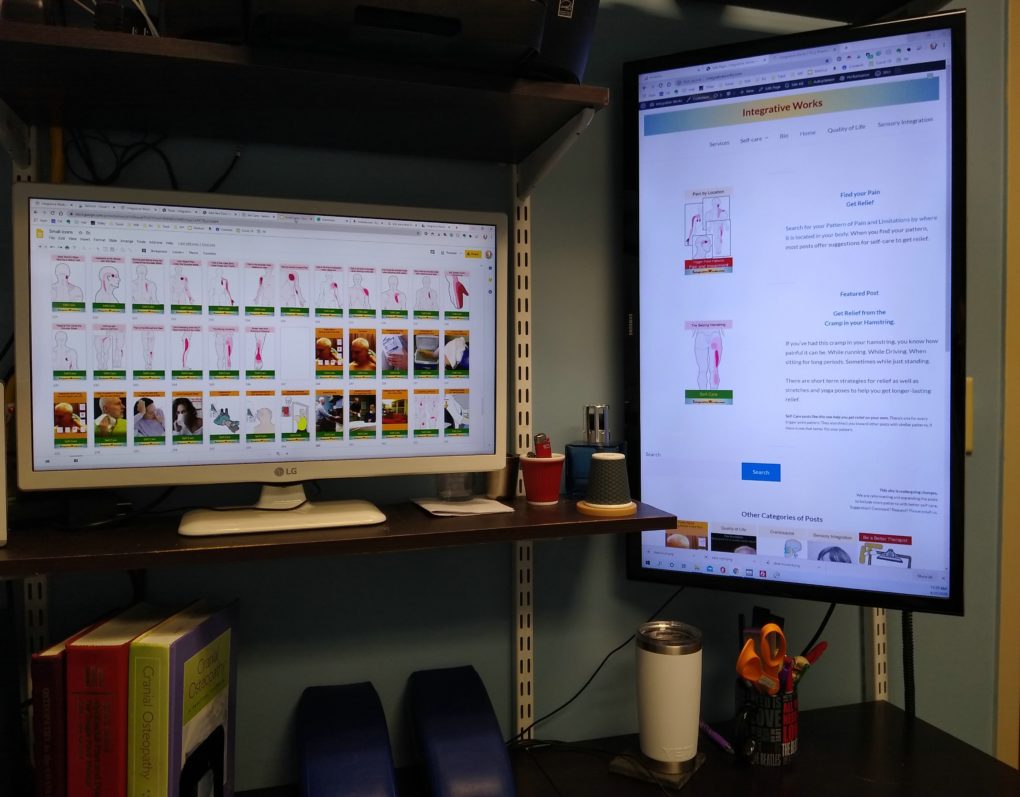
Monitors
For the past 15 years or so, I’ve had dual screens, One is a landscape screen, and one is a portrait screen. The landscape screen lends itself to watching training videos and certain types of editing.
The portrait screen is, well, how most things display these days: documents, web pages, illustrations of bodies, etc. Actually, it is a 32″ television turned on its side. It makes a big easel for illustrating. It pivots and is excellent for explaining things to clients. I use this on most days to reference something on the web and then email it to the client that I’m helping.
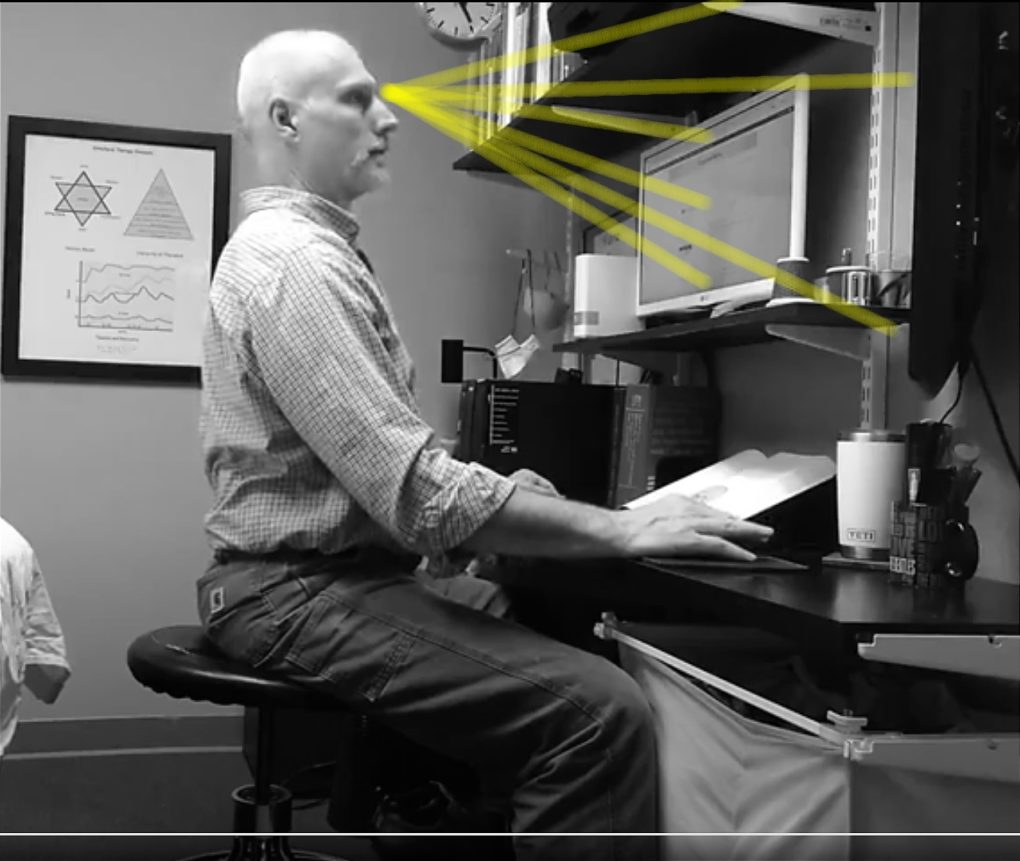
Screen Height
I’m usually facing the two screens. I’m constantly turning back and forth, tilting up and down, and getting a little movement in my neck and on my swivel stool.
I often use books while working, like the one under my screen in this photo. I only lay them there when I need to study the book while typing. I might do this if I’m writing about a detailed diagram or interpreting a complex passage. Otherwise, I try to pick it up, turn around to my table and read a little. Then, I come back to the screen, trying to incorporate some extra movement in sedentary work.
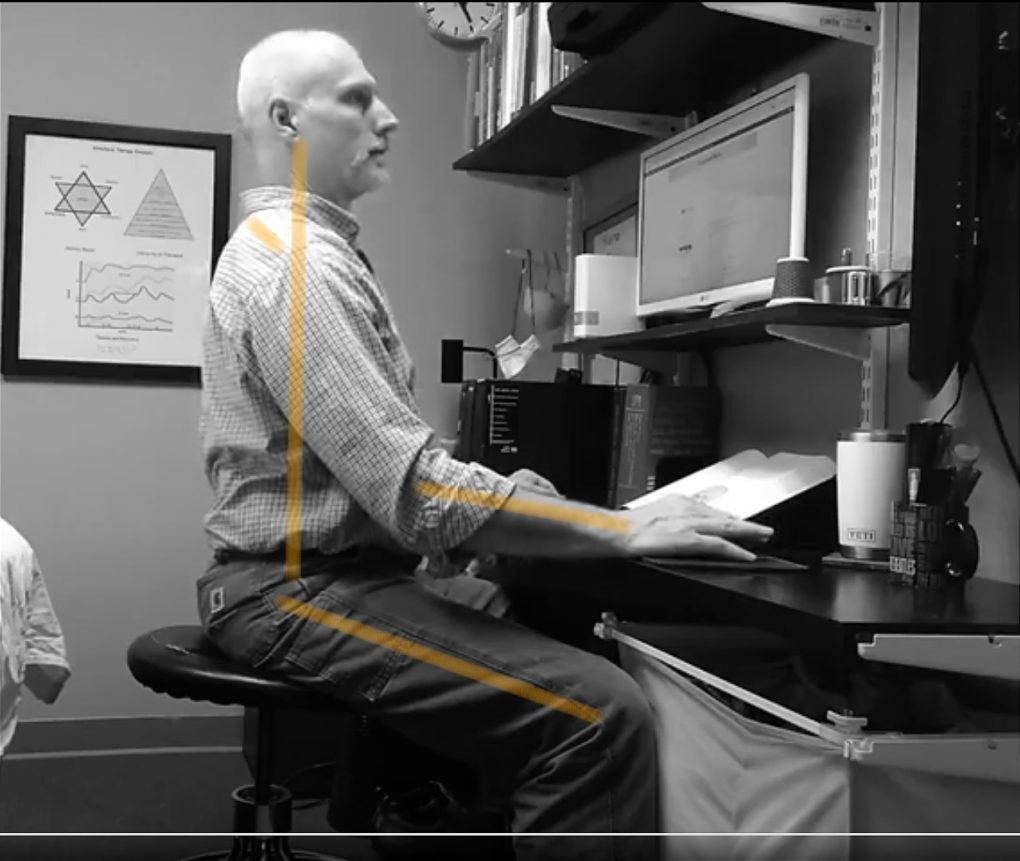
Little Details That Help
There are a few different ways to think about supporting yourself when you work. I subscribe to this idea:
When your job is the most strenuous thing
that you do with your body,
your job will stress your body.
Low back muscles begin to atrophy more quickly than any other muscle in the body, starting in your late 30s. I’ve always had an exercise program but started emphasizing low back exercises to keep my core strong. I have much less back pain now than when I started doing bodywork in my 30s.
Low-Back Curve
I prefer to work on a swivel stool. I am mindful of the curve in my low back by keeping my head over my hips. Also, my knees are slightly lower than my hips.
This can be problematic if you are in a chair that might press into your hamstrings. This pressure can activate trigger points and generate hip or knee pain. This also happens while driving long distances.
I work with my hands lower than my elbows and my shoulders lower than the base of my neck. This keeps the shoulders relaxed. I do these breathing exercises when they’re bothering me.
The disadvantage to this approach is the time and attention that is required to stay active as well as the time and effort put into exercise to keep your body toned.
Passively supporting postural imbalances:
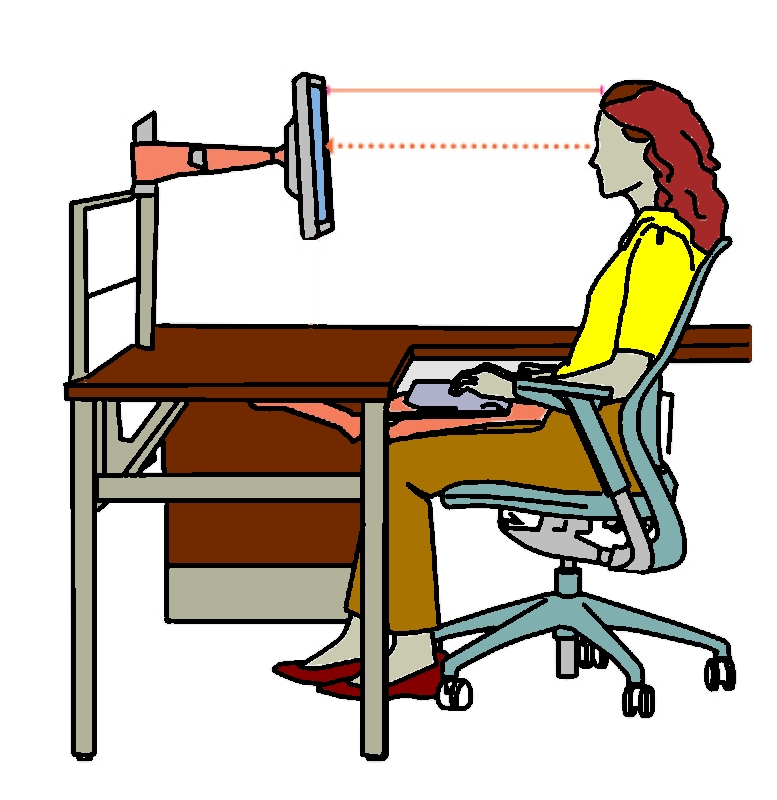
This is a popular illustration on the web and a different way of going about desk posture. It involves postural supports. It is best when these supports are adjustable so that they can accommodate changing posture.
Back & Neck Support
This person has some Head-Forward Posture. The chair is designed to support her back at a tilt so that her head pulls slightly forward.
Her chair supports her thighs to be level with her hips. The chair also supports the lumbar curve. I find this support interesting when I’m doing less active things like driving or watching movies.
Shoulders
Her arm rests are high and support her shoulders to be high and tight. It’s more common these days that the shoulders become high and tight from leaning on elbows while working on a laptop.
This is a pretty common approach and requires less work on your part. It may be a better choice if you don’t get much exercise and need more support in your posture.
This is a pretty common approach and requires less work on your part. It may be a better choice if you need more support to stay out of pain while working. The disadvantage of this approach is that the lack of movement perpetuates stiffness and, if you’re not getting exercise, promotes a body that is less able to support itself.
Accessories that help
Desks that allow you to Sit or Stand:
Many of my clients are only comfortable if they can shift from seated to standing when one or the other starts bothering them. Tabletop models like this one from Amazon have made this option more practical and affordable. They have a big selection for desks, for beds, wooden, metal, etc.
Footrests:
Footrests make a real difference in how you feel at the end of the day. Just the tilting motion changes your low back. Try it. Just tilt your foot up, and you’ll feel your lumbar curve firm up. I was blessed with Hobbit feet, so it is difficult to find one big enough for me. These are the two best footrests on Amazon. I’d get the foam footrest as I like to work in socks. The rubber footrest gets the best ratings if you’re wearing shoes.
Live on Your Laptop?
Setting up an environment like this to work is great if you have space. Many people work in coffee shops, on a couch, or propped up in bed. Laptop stands like this can do a lot to raise the screen and tilt the keyboard so that you’re not hunched over a table, leaning on your elbows, creating high, tight shoulders.
Most are inexpensive and designed to fit in your bag. This one does everything from standing desk to cooling fans. If you mostly work at a table, there are less expensive ones that raise and swivel the laptop. There are elegant ones that stand beside the couch like a TV table. Get one that helps you maintain good posture in your most common setting.
Setting up an environment like this to work is great if you have space. Many people work in coffee shops or on a couch. This kind of work can lead to lasting changes as bones remodel from years of poor posture. If you’re working like that, pick up an exercise program that includes shoulder and core work 3 or more days out of the week.
A good exercise program and some regular bodywork can make your body much more adaptable and resilient so that it is less bothersome when your environment isn’t just right.
Support Integrative Works to
stay independent
and produce great content.
You can subscribe to our community on Patreon. You will get links to free content and access to exclusive content not seen on this site. In addition, we will be posting anatomy illustrations, treatment notes, and sections from our manuals not found on this site. Thank you so much for being so supportive.
Cranio Cradle Cup
This mug has classic, colorful illustrations of the craniosacral system and vault hold #3. It makes a great gift and conversation piece.
Tony Preston has a practice in Atlanta, Georgia, where he sees clients. He has written materials and instructed classes since the mid-90s. This includes anatomy, trigger points, cranial, and neuromuscular.
Question? Comment? Typo?
integrativeworks@gmail.com
Follow us on Instagram

*This site is undergoing significant changes. We are reformatting and expanding the posts to make them easier to read. The result will also be more accessible and include more patterns with better self-care. Meanwhile, there may be formatting, content presentation, and readability inconsistencies. Until we get older posts updated, please excuse our mess.

